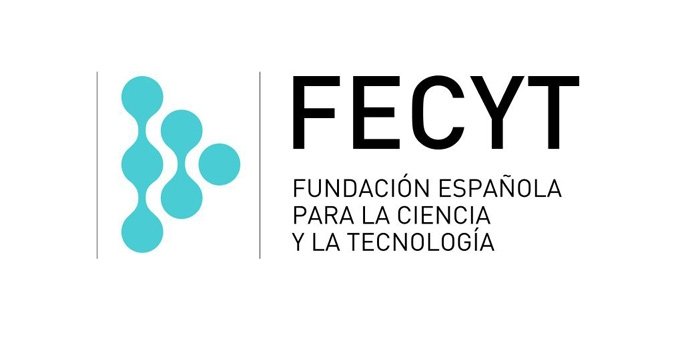The entrepreneurial journey of venture creation: reshaping process and space
Resumen
Abstract
The author develops further technology-based entrepreneurial journey and process concepts and models as well as defining the space of opportunity development between of the edges: Discovery & Exploitation, Arbitrage & Innovation and Existing & Created Opportunities. For that, new stage model of the entrepreneurial process will be introduced in the next section followed by a description of the entrepreneurial journey based on that. From the analysis of objectivist and constructivist approaches to opportunities, the ways are deduced how entrepreneurs learn to apply and develop entrepreneurial opportunities. As a result, the framework of the HTSF entrepreneurial journey is presented.
The main value of the paper is the development further entrepreneurial journey, the entrepreneurial process and entrepreneurial opportunity (corridor) concepts for technology entrepreneurship (HTSFs) and suggestion a framework for further empirical validation.
Keywords: entrepreneurship; entrepreneurial process; high-tech ventures; new venture creation; technology entrepreneurship
Descargas
Referencias
Alvarez, S.A. and Barney, J.B. (2007): ”Discovery and creation: alternative theories of entrepreneurial creation”, Strategic Entrepreneurship Journal, vol. 1, nº 1, pp. 11–26.
Anokhin, S., Wincent, J. and Autio, E. (2011): “Operationalizing opportunities in entrepreneurship research: use of data envelopment analysis”, Small Bus
iness Economics, vol. 37, nº 1, pp. 39–57.
Anokhin, S. and Wincent, J. (2014): “Technological arbitrage opportunities and interindustry differences in entry rates”, Journal of Business Venturing, Vol. 29, nº 3, pp. 437–452.
Arnold, R. D. and J. P. Wade. (2015): “A Definition of Systems Thinking: A Systems Approach”, Procedia Computer Science, vol. 44, pp. 669–678.
Bhave, M. P. (1994): “A process model of entrepreneurial venture creation”, Journal of Business Venturing, vol. 9, nº 3, pp. 223-242.
Bloom B, Engelhart M, Furst E, et al. (1956): Taxonomy of Educational Objectives: The Classification of Educational Goals. Handbook I: Cognitive Domain. New York: David McKay.
Brem, A. (2011): “Linking innovation and entrepreneurship – literature overview and introduction of a process-oriented framework”, International Journal of Entrepreneurship and Innovation Management, vol. 14, nº 1, pp. 6-35.
Baum, J.R. and Locke, E.A. (2004): „The relationship of entrepreneurial traits, skill, and motivation to subsequent venture growth”, Journal Applied Psychology, vol. 89, nº 4, pp. 587-598.
Baum, J.R., Locke, E.A. and Smith, K.G. (2001): “A multidimensional model of venture growth”, Academy of Management Journal, vol. 44, nº 2, pp. 292-303.
Cha, M.-S., Bae, Z.-T. (2010). The entrepreneurial journey: From entrepreneurial intent to opportunity realization. Journal of High Technology Management Research, 21, 31–42.
Cunneen, D.J. and Mankelow, G.J. (2007): “Towards a Process Model of Independent Growth Firm Creation”, Small Enterprise Research, vol. 15, nº 1, pp. 90-105.
Dahlqvist, J. and Wiklund, J., (2012): “Measuring the market newness of new ventures”, Journal of Business Venturing, vol. 27, nº 2, pp. 185-196.
Davidsson, P. (2015): “Entrepreneurial opportunities and the entrepreneurship nexus: A re-conceptualization”, Journal of Business Venturing, vol. 30, nº 5, pp. 675-695.
Davidsson, P. (2016): Researching entrepreneurship. Conceptualization and Design. Second Edition. Springer.
Dimov, D. (2007): “From opportunity insight to opportunity intention: the importance of person–situation learning match”, Entrepreneurship Theory and Practice, vol. 31, nº 4, pp. 561–583.
Eurofound (2012): Born global: The potential of job creation in new international businesses. Publications Office of the European Union, Luxembourg.
Garcia, R. and Calantone, R. (2002): “A critical look at technological innovation typology and innovativeness terminology: a literature review”, Product Innovation Management, vol. 19, nº 2, pp. 110–132.
Gartner, W.B. (1985): “A conceptual framework for describing the phenomenon of new venture creation”, Academy of Management Review, vol. 10, nº 4, pp. 696– 706.
Garud, R., and Karnoe, P. (2003): “Bricolage versus breakthrough: Distributed and embedded agency in technology entrepreneurship”, Research Policy, vol. 32, nº 2, pp. 277–300.
Haeussler, C., Patzelt, H. and Zahra A. (2012): „Strategic alliances and product development in high technology new firms: The moderating effect of technological capabilities”, Journal of Business Venturing, vol. 27, nº 2, pp. 217-233.
Jones, M.V. and Coviello, N.E. (2005): “Internationalisation: conceptualising an entrepreneurial process of behaviour in time”, Journal of International Business Studies, vol. 36, nº 3, pp. 284-303.
Keupp, M.M. and Gassmann, O. (2009): ”The past and the future of international entrepreneurship: a review and suggestions for developing the field”, Journal of Management, vol. 35, nº 3, pp. 600-633.
Kirzner, I. M. (1999): “Creativity and/or alertness: a reconsideration of the Schumpeterian entrepreneur”, Review of Austrian Economics, vol. 11, nº 1-2, pp. 5–17.
Kolb, A.Y. and Kolb, D.A. (2007): “The Learning Way: Meta-cognitive Aspects of Experiential Learning”, Simulation & Gaming, vol. 40, nº 3, pp. 297-327.
Kolb, D.A. (1984): Experiential learning: experience as the source of learning and development. New Jersey: Prentice-Hall.
Kraiger, K., Ford, J. and Salas, E. (1993): ”Application of cognitive, skill-based and affective theories of learning outcomes to new methods of training evaluation”, Journal of Applied Psychology, vol. 78, nº 2, pp. 311–328.
Langley, A. (1999): “Strategies for theorizing from process data”, Academy of Management Review, vol. 24, nº 4, pp. 691-710.
Lin, E., Lin, T. M. Y., and Lin, B. W. (2010): ”New high-tech venturing as process of resource a
ccumulation. Management Decision”, vol. 48, nº 8, pp. 1230–1246.
McFadzean, E., O'Loughlin, A. and Shaw, E. (2005): “Corporate entrepreneurship and innovation, part 1: the missing link”, European Journal of Innovation Management, vol. 8, nº 3, pp. 350-372.
McMullen, J.S. and Dimov, D. (2013): “Time and the entrepreneurial journey: the problems and promise of studying entrepreneurship as a process”, Journal of Management Studies, vol. 50, nº 8, pp. 1481–1512.
Mets, T. (2012): “Creative Business Model Innovation for Globalizing SMEs”, in: Thierry Burger-Helmchen (ed.), Entrepreneurship - Creativity and innovative Business Models. InTech, Rijeka, Croatia, pp. 169-190.
Mets, T. (2016): “Is Estonia becoming better home for ‘born globals’?”, in: David Smallbone, Arnis Sauka and Markku Virtanen (Eds.) Entrepreneurship, Innovation and Regional Development in the New Europe. Cheltenham: Edward Elgar, pp. 101-124.
Mets, T. and Torokoff, M. (2007): “Patterns of learning organisation in Estonian companies’, TRAMES: A Journal of the Humanities and Social Sciences”, vol. 11, nº 2, pp. 139–54.
Mets, T., Raudsaar, M. and Summatavet, K. (2013): ”Experimenting social constructivist approach in entrepreneurial process-based training: cases in social, creative and technology entrepreneurship”, in: Martin Curley and Piero Formica (Eds.), The experimental nature of new venture creation. Springer, pp. 107-125.
Moroz, P. W. and Hindle, K. (2012): „Entrepreneurship as a Process: Toward Harmonizing Multiple Perspectives”, Entrepreneurship Theory & Practice, vol. 36, nº 4, pp. 781-818.
Naffziger, D.W., Hornsby, J.S. and Kuratko, D.F. (1994): “A Proposed Research Model of Entrepreneurial Motivation”, Entrepreneurship Theory and Practice, Spring, pp. 29-42.
Nonaka, I. and Konno, N. (1998): “The Concept of “Ba”: Building a Foundation for Knowledge Creation”, California Management Review, vol. 40, nº 3, pp. 40-54.
Relan, P. (2012): 90% of Incubators and Accelerators will Fail and That’s Just Fine for America and the World, TechCrunch, October.
Reynolds, P.D. (2017): “When is a Firm Born? Alternative Criteria and Consequences”, Business Economics, vol. 52, nº 1, pp.41–56.
Sarasvathy, S. (2001): “Causation and effectuation: towards a theoretical shift from economic inevitability to entrepreneurial contingency”, Academy of Management Review, vol. 26, nº 2, pp. 243-288.
Sarasvathy, S.D. (2008): Effectuation: elements of entrepreneurial expertise. Cheltenham: Edward Elgar Publishing.
Schumpeter, J. A. (1934): The Theory of Economic Development. New Brunswick: Transaction Publishers.
Selden, P.D. and Fletcher, D.E. (2015): “The entrepreneurial journey as an emergent hierarchical system of artifact-creating processes”, Journal of Business Venturing, vol. 30, nº 4, pp. 603–615.
Senge, P. (1990): “The fifth discipline. The art and practice of the learning organization”. Sydney: Random House.
Shane, S. (2000): “Prior knowledge and the discovery of entrepreneurial opportunities”, Organization Science, vol. 11, nº 4, pp. 448–469.
Sørensen, S., Heidemann Lassen, A. and Hinson, R. (2007): „Towards a Conceptualization of Entrepreneurship”, Journal of Research in Marketing and Entrepreneurship, vol. 9, nº 1, pp. 89-101.
Van de Ven, A. H. and Engleman, R. M. (2004): “Event- and outcome-driven explanations of entrepreneurship”, Journal of Business Venturing. Vol. 19, nº 3, pp. 343-358.
Venkataraman, S. (2004): “Regional transformation through technical entrepreneurship”, Journal of Business Venturing, vol. 19, nº 1, pp. 153-167.
Wood M.S. and W. McKinley (2010): “The Production of Entrepreneurial Opportunity”, Strategic Entrepreneurship Journal, vol. 4, nº 1, pp. 66–84.
Yovanof, G. and Hazapis, G. (2008): “Disruptive technologies, services, or business models”, Wireless Personal Communications, 45, nº 4, pp. 569-583.
Zott, C. and Amit, R. (2008): “The fit between product market strategy and business model: implications for firm performance”, Strategic Management Journal, vol. 29, nº 1, pp. 1–26.
Descargas
Publicado
Número
Sección
Licencia
- Los autores/as conservarán sus derechos de autor y garantizarán a la revista el derecho de primera publicación de su obra, el cuál estará simultáneamente sujeto a la Licencia de reconocimiento de Creative Commons que permite a terceros compartir la obra siempre que se indique su autor y su primera publicación esta revista.
- Los autores/as podrán adoptar otros acuerdos de licencia no exclusiva de distribución de la versión de la obra publicada (p. ej.: depositarla en un archivo telemático institucional o publicarla en un volumen monográfico) siempre que se indique la publicación inicial en esta revista.
- Se permite y recomienda a los autores/as difundir su obra a través de Internet (p. ej.: en archivos telemáticos institucionales o en su página web) antes y durante el proceso de envío, lo cual puede producir intercambios interesantes y aumentar las citas de la obra publicada. (Véase El efecto del acceso abierto).
La Revista de Estudios Empresariales. Segunda Época, utiliza PKP Preservation Network (PN).




























